Glocal Spring School is a new intensive program open to students of the doctoral program, master's program, professional master's degree program, individual workers, and students of other universities as well as from overseas. Students in the doctoral program can receive one credit of Liberal Arts Courses for the doctoral program.
This program was prepared and conducted by staff of the Individual Studies Courses and Liberal Arts Courses for the doctoral program that started in 2016.
Professor Takehiro Inohara was the head of this program, Associate Professor Hironao Kaneko set the schedule and special lectures, Associate Professor Daisuke Harada led group formation, Assistant Professor Naoko Kuriyama designed and prepared a model-making workshop, and Assistant Professor Kenji Hatanaka conducted a lecture on the methods of group discussion.
The program was held from March 3 to 5, 2019, at Ookayama Campus North Building 2, Multi-Purpose Hall.
Special lecturers
Sunday, March 3 |
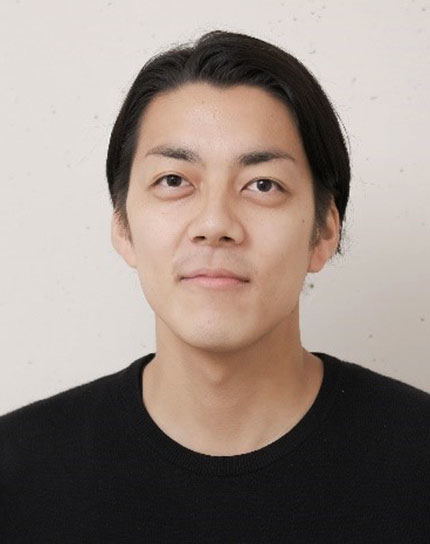
Lecture: Keisuke SHIMAKAGE
OTON Glass Inc. CEO (Sight Extension Device producer)
Entrepreneur, Researcher, Designer
Assistant Professor, Tsukuba University (Yoichi Ochiai Labo.)
JST CREST xDiversity,
Doctoral Course KeioUniversity
Specialty: Design Research, Inclusive Design, Speculative Design, Fab, HCI.
|
Monday, March 5 |
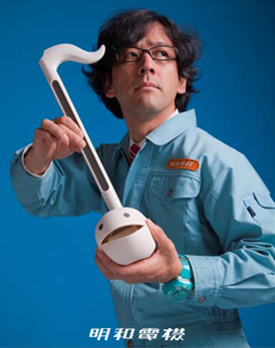
Workshop: Nobumichi TOSA
(MAYWA DENKI, Art Unit Producer)
MAYWA-DENKI: The art unit produced by Nobumichi Tosa.
Their work-uniform is blue; it is a type of the small businesses that supported high economic growth in Japan. It refers to a job as a "product" and as live "product demonstration," develops various "Nonsense-Machines" and organizes live shows and exhibitions both in Japan and overseas.
It produced an electronic musical instrument in the form of the note "OTAMA Tone."
In January 2016, it successfully organized the first large-scale exhibition at the museum McaM in Shanghai, China. In 2018, it completed 25 years since its debut; exhibitions had also been organized in Ooita and Nagasaki.
|
Guests & Referees
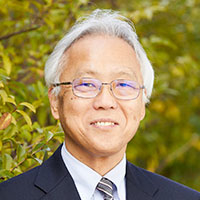
Tetsuya MIZUMOTO,
Executive Vice President for Education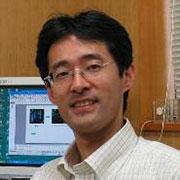
Junichi IMURA,
Vice President for Teaching and Learning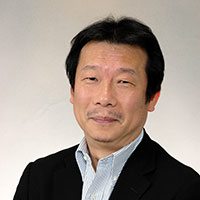
Hidetoshi SEKIGUCHI,
Vice President for International Affairs
Day 1 (March 3)
In the opening ceremony, Professor Jun-ichi Imura, Vice President for Teaching and Learning, gave a speech and Inohara explained the program's purpose.
In a special lecture, Keisuke Shimakage (OTON Glass Co. Ltd., CEO; Tsukuba University's Yoichi Ochiai Lab, Assistant Professor) talked about the invention and production of an OTON Glass, a glasses-type visual extension device that can help people with visual impairment or dyslexia. Some local governments have offered subsidies for using the glass.
Participants of the program were shown a demonstration of OTON Glass — its automated system read aloud a document, translating it from English to Japanese with the help of the glasses.
Shimakage continued his talk on the program theme, "design for humanity", and spoke about the possibility of a new design using digital fabrication to make it different from the mass-produced and mentioned about the Toaster Project. He also told about activities making biotope that he engaged in.
At the lunch break, participants enjoyed communication using self-introduction posters displayed on the wall. They had a chat with Shimakage.
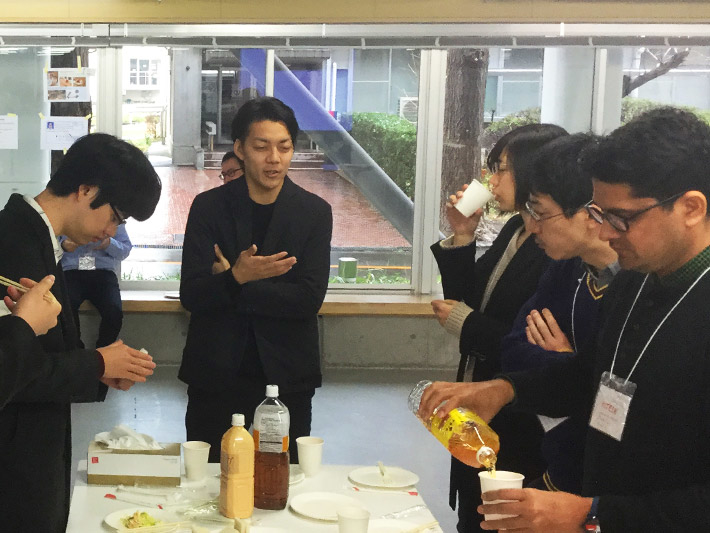
Casual talk with Associate Professor Shimakage
In the afternoon, Associate Professor Harada led group formation to start team activities. He made nine groups comprising five to six students each from doctoral programs, master programs, and other universities. Students decided group names and introduced group members.
Associate Professor Kaneko then lectured on Internet research to understand the human body. Students made cards containing the information researched in this session. Students shared knowledge of the human body with other groups with the help of the cards.
Day 2 (March 4)
Inohara conducted a lecture on research ethics and led group work to confirm understanding of the subject using cards designed by him.
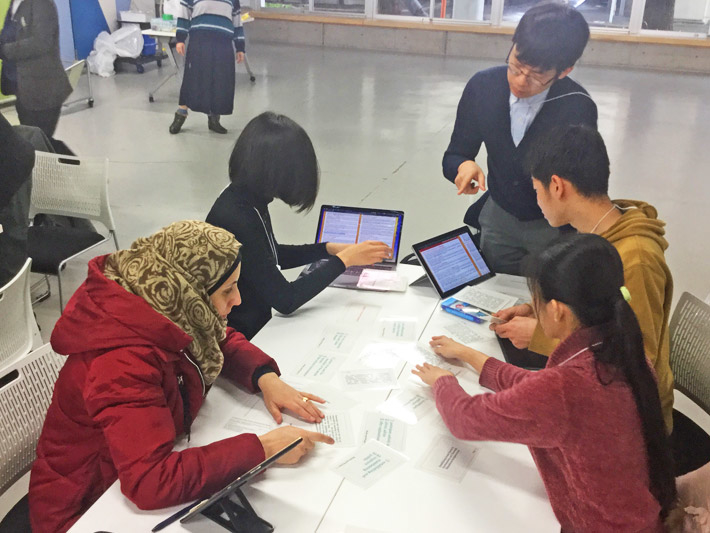
Researcher's Ethics Learning Card
Hatanaka conducted a lecture on discussion methods, focusing on brainstorming and the KJ method, and led group work to discuss humanity while applying the discussion methods learned.
In the afternoon, Associate Professor Kaneko led group work to discuss the solving of social problems before a final presentation by each group.
In this final presentation, students were expected to make 3D models to explain their ideas. Kuriyama led a workshop to make a model with the scratch and build method. Engineering students discussed their ideas for the final presentation and got so engrossed in working on their models using tools, micro-computers, and blocks, that many even stayed after class hours to finish their work.
Day 3 (March 5)
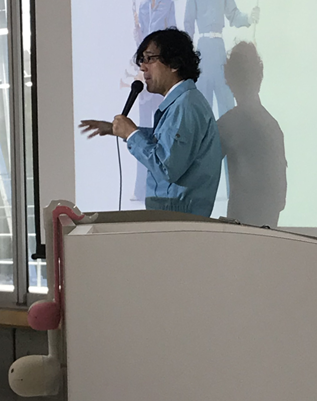
MAYWADENKI Nobumichi Tosa
Before the class started, some students came to work on their models.
In the morning session, Mr. Nobumichi Tosa, MAYWADENKI, a global art unit director, conducted a lecture on his activities, art works, and invention of his top-selling product "Otamatone."
He held then an original MAYWADENKI-style workshop to create an idea combining different ideas.
In the workshop, students tried to create nonsense machines and drew sketches to explain the uniqueness of their respective ideas. Everyone enjoyed this session and the method of creating ideas and a branding strategy with the help of MAYWADENKI.
The afternoon session was a tense one, as students continued working on their final presentation and making models.
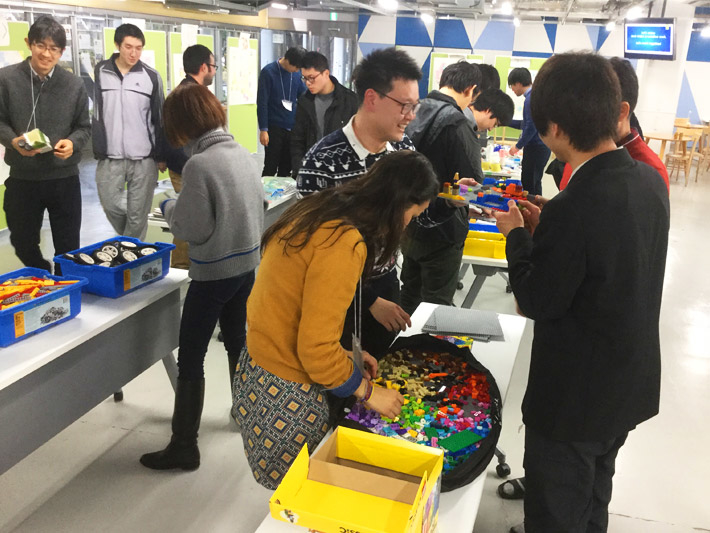
Select Parts to Make a Model
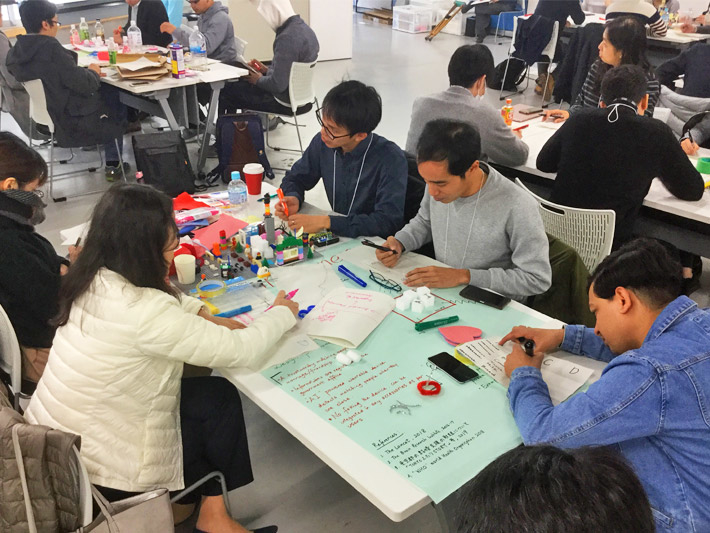
Poster and Model Making
At the final presentation, each group gave a ten-minute presentation, which comprised all members explaining their ideas and a question-and-answer session.
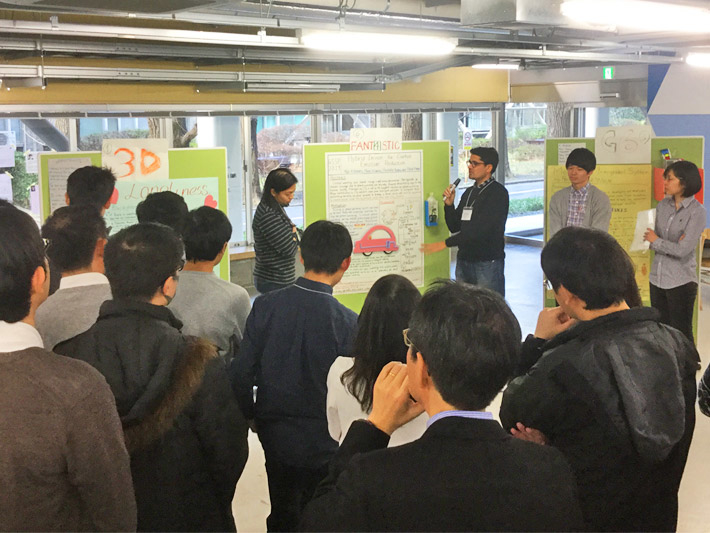
Final Presentation
At the final presentation, Vice President Imura and Professor Hidetoshi Sekiguchi, Vice President for International Affairs at the time of the event, took on the role of judges to decide the winners. Professor Tetsuya Mizumoto, Executive Vice President for Education and Professor Noriyuki Ueda, Dean of the Institute for Liberal Arts, also observed the presentation.
Two groups stood out. Imura presented the Glocal Prize to the group that proposed to reduce food waste, while Sekiguchi awarded the Innovative Prize to the group that proposed to tackle the feeling of loneliness.
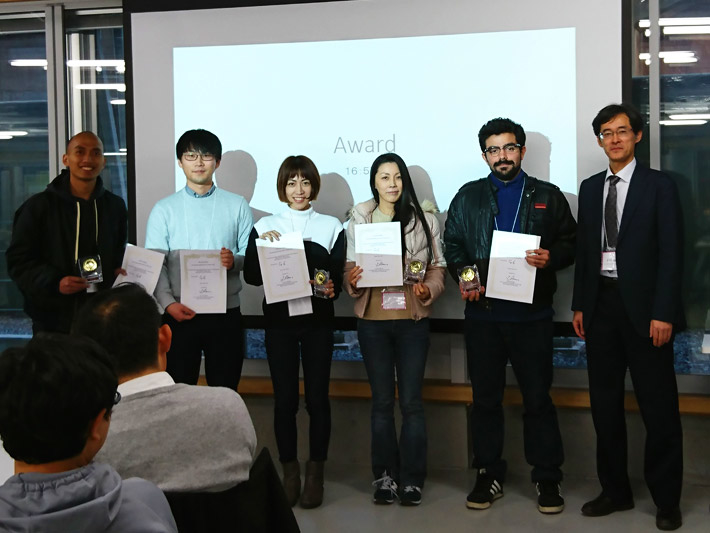
Glocal Prize Winner and Vice President Imura
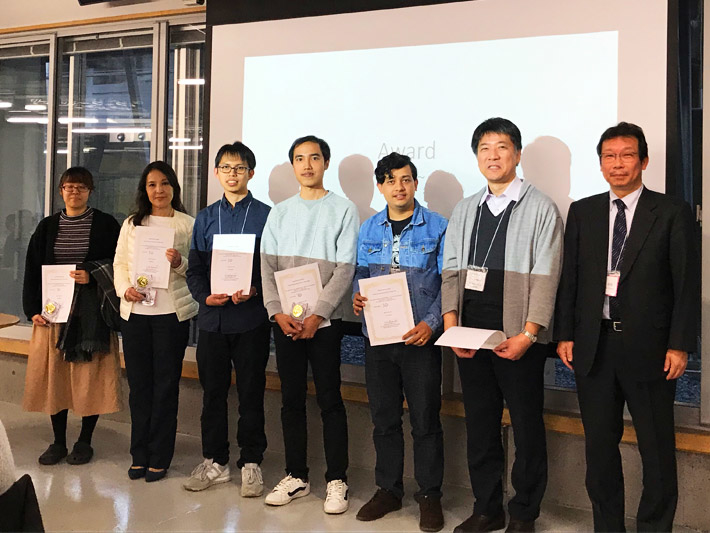
Innovative Prize Winner and Professor Sekiguchi
In the closing ceremony, Mizumoto talked about the program and handed certificates to students of Hitotsubashi University who had completed the program.
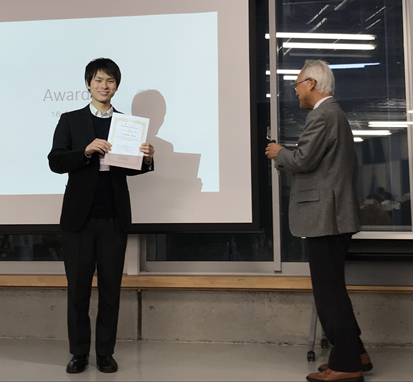
Student from Hitotsubashi University and
Executive Vice President Mizumoto
All participants shook hands and praised each other's efforts in the three-day program.
Students in every group even promised to collaborate in future research work.
Professor Satoshi Nakamura, Vice President for Global Communication, official staff of Tokyo Tech, entrepreneurs, and journalists observed the program.
This program received financial support from Tokyo Tech to promote an international educational program (under the name of Professor Inohara in September 2018).
. Any information published on this site will be valid in relation to Science Tokyo.
















